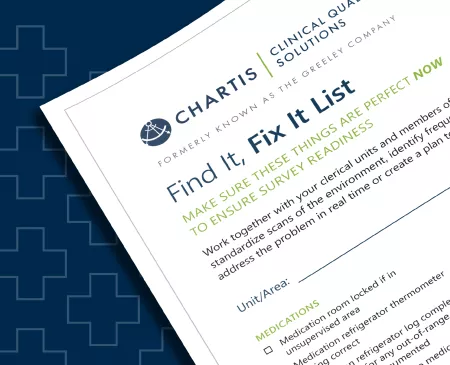Why?
Collaboration is essential to patient care, especially in behavioral health. Patients’ multiple and often diverse needs make collaborative, interdisciplinary treatment plans—not just care plans—an indispensable tool for healthcare providers.
These plans should be individualized, measurable, time-specific roadmaps of care. One critical factor sets them up for success: each member of the patient’s healthcare team, across disciplines, engages in deliberate, diligent collaboration to establish and maintain the plan. Input from the patient’s team, which may include nurses, psychiatrists, internal medicine physicians, social workers, dieticians, pharmacists, occupational and recreation therapists, and others, is essential to ensuring positive patient outcomes.
Yet almost every behavioral health hospital (or unit) struggles with this kind of collaboration. I often see them falling short of identifying what patients truly need, or not fully and clearly outlining how each discipline can meaningfully contribute to a patient’s wellness journey.
Why now?
Inpatient behavioral health populations are increasing in number, acuity, and complexity. Patients are prone to rapid readmission. An analysis of 60,254 discharges from state psychiatric hospitals revealed that nearly one in ten psychiatric patients were re-admitted to the same hospital within 30 days, according to a study published by the Journal for Healthcare Quality in 2019. This is a tremendous challenge for healthcare staff and for the patients themselves—one that stretches already thin resources.
Not to mention, The Joint Commission continues to frequently cite treatment planning vulnerabilities during behavioral health facility and unit surveys.
Clearly, we have a pressing issue and an incentive to find a solution.
With my clients, I’ve seen that a well-designed cross-discipline treatment plan can help. Integrated approaches streamline your patient’s path to successful discharge and reduce their potential for readmission—two things we urgently need.
What?
The reality for many behavioral health organizations is that they lack the proper structure and resources to optimize collaboration between members of the patient’s healthcare team and the patient. This puts the team’s attempts to collaborate at a disadvantage from the start.
Without proper infrastructure and adequate staffing, building an effective interdisciplinary treatment process seems almost out of reach.
The resource challenges of the behavioral health field—an existing issue—have only been exacerbated by the pandemic.
So how can you accelerate collaboration within your organization?
Getting the job done together, yet separately
The best-case scenario would be for the interdisciplinary treatment team to meet at least weekly, or more frequently when clinically indicated, for the patient’s treatment review. Although staffing and shorter-length stays make this unrealistic. While group meetings are ideal, today’s environment makes it unlikely, simply because we can’t always get all the right players in the room at the same time.
Instead, let’s consider a more realistic scenario and reverse engineer it into an operationally efficient treatment plan—one that also meets patient needs and regulatory requirements.
To get started, we know:
- Each patient should have an individualized, comprehensive treatment plan based on their strengths and limitations.
- A patient's short-term goals are steps toward the long-term goal (e.g., discharge criteria).
- Staff interventions assist the patient in attaining their goals of treatment.
We can use these basic requirements as building blocks for a new approach.
Fractured, but focused
Most assessments are completed separately by each discipline; however, during daily rounding, providers discuss patient issues in detail, and all disciplines participate. These may be conducted through a formal or informal process, and not every discipline may participate every day. Regardless, all disciplines are involved, to varying degrees, several times per week.
This is the key to a better, more realistic approach to collaborative interdisciplinary treatment planning. And we need to capture this process (however informal) into a cohesive roadmap of patient care. To do so, members from each discipline should:
- Examine all of a patient’s information, including what pertains to other disciplines, in order to develop the patient’s treatment plan.
- Build in objectives and goals for their discipline that align with the goals of other disciplinary areas, where appropriate.
- For instance, nurses might focus on helping the patient understand their medication’s benefits and side effects, which would complement the physician’s medication plan and increase the patient’s compliance and comprehension. A recreation therapist might teach coping strategies that the patient can demonstrate, such as isometric exercises, mindfulness, visual imagery, and card games.
- Regularly assess and review treatment plan updates from every discipline to gain a holistic view of the patient’s progress.
- Review progress and group notes to determine whether the patient’s goals and objectives should be modified based on their needs and progress (or lack thereof).
- Articulate changes and updates in the treatment plan and progress notes so that other team members can maintain the same approach.
In practice, this could mean a patient whose primary mode of treatment is group therapy, but who has failed to participate in any sessions in recent weeks, can get the help they need and get back on track quickly. As each provider sees the absences noted, they can adjust the patient’s timeline and goals for their discipline, where needed, or pursue another approach altogether.
It could also mean a patient who states they are not suicidal to the physician but tells another interdisciplinary team member about recent suicide ideation. This should be verbally communicated and captured within a progress note so all disciplines are aware when reviewing the medical record.
In both scenarios, because information from each discipline is regularly reviewed, updated, and readily available in updated progress notes, every team member has the interdisciplinary insight to adjust interventions when and where needed for their discipline.
Mapping out a plan that everyone understands
Here’s the litmus test: If someone from any discipline can pick up a treatment plan, know the patient’s expected course of overall treatment (short- and long-term), and clearly understand each discipline’s involvement, then congratulations, you’ve got your plan.
For this to work, each discipline needs to write their treatment goals in a way that makes it easy to measure changes in the patient’s behavior. Measurable and time-specific goals enable staff to monitor what, when, and how patients can meet their treatment expectations, in addition to meeting regulatory requirements. For examples and guidance, download our Psychiatric Treatment Plan SMART Goals and Staff Interventions Worksheet.
If each discipline documents the patient’s treatment response and progress toward treatment goals, providers can better assess their progress in real time.
Impact?
Moving to a treatment planning process that is operationally efficient and, most importantly, truly interdisciplinary—but realistic—reduces unnecessary artifice in daily practice and frees healthcare providers to focus on treating the patient instead of the “paper.”
This approach builds off what you’re already doing: it’s an organically constructed treatment plan framed by established communication practices in your behavioral health practice. Even better, implementing this change creates a focused process that may expedite successful discharge. And by maximizing the natural process of care communication and delivery, patients are more likely to receive an individualized treatment plan rather than a cookie cutter approach to their care.
Takeaways
Collaborative interdisciplinary treatment planning must be prioritized—it’s the key to success in a patient’s journey to wellness. But we need to accept that it’s rarely realistic for all disciplines to sit together, discuss, and write treatment plans. The less formal approach outlined above is a solid compromise that encourages active discussion and collaboration while making use of your existing structure.
Here’s how you can get started:
- Acknowledge that meeting time is precious: The interdisciplinary team and patient/guardian must have a dedicated time to develop a coordinated plan that addresses the patient’s needs.
- Align goals and goal-writing practices: Help the interdisciplinary team transition to writing goals that everyone can understand and support. (Don’t forget to download our guide.)
- Review the plan and the progress regularly: Keep an eye out for changes that may impact the goals for your discipline and identify opportunities to work together to promote progress.
Effective patient care will always necessitate clear communication paired with measurable, diligently monitored, time-specific goals. But for maximum effectiveness, collaboration is the real key.
© 2023 Chartis Clinical Quality Solutions. All rights reserved. This content draws on the research and experience of Chartis consultants and other sources. It is for general information purposes only and should not be used as a substitute for consultation with professional advisors. It does not constitute legal advice.






